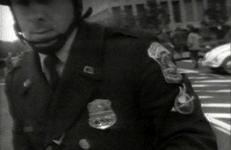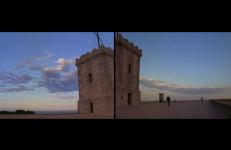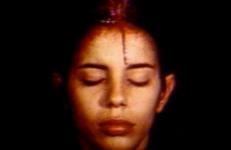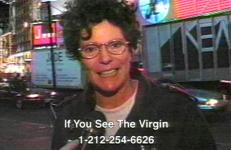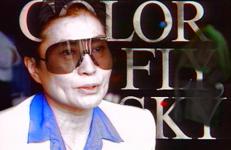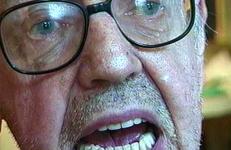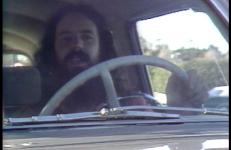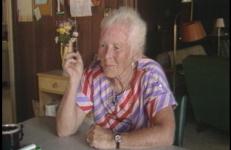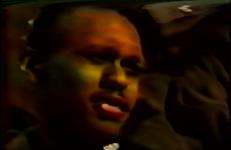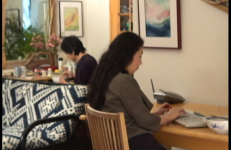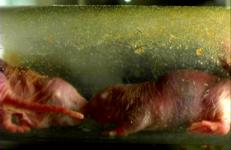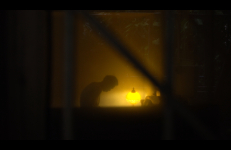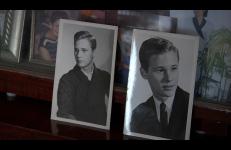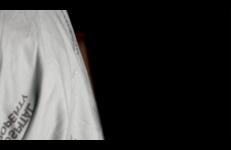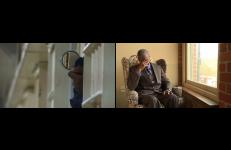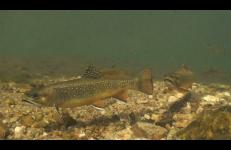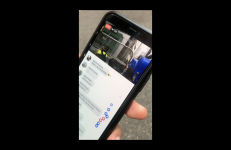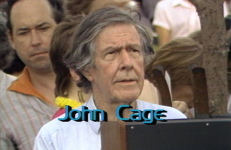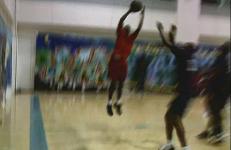As a verite documentation of the May 1, 1971 demonstration against the Vietnam War staged in Washington, D.C., Mayday Realtime presents a largely unedited flow of events from the point of view of participants on the street. Cort's camera captures the random, disorienting incidents that marked the day - demonstrators holding up traffic in the Capitol, skirmishes with police, on-the-scene interviews with onlookers. The camera impulsively responds to shouting and movement on the street.
Documentary
As a verite documentation of the May 1, 1971 demonstration against the Vietnam War staged in Washington, D.C., Mayday Realtime presents a largely unedited flow of events from the point of view of participants on the street. Cort's camera captures the random, disorienting incidents that marked the day - demonstrators holding up traffic in the Capitol, skirmishes with police, on-the-scene interviews with onlookers. The camera impulsively responds to shouting and movement on the street.
Jacqueline Goss and Jenny Perlin retrace the journey of two 18th-century astronomers tasked with determining the true length of the meter. From the Mediterranean Sea to the English Channel, The Measures explores the metric system’s origins during the violence and upheavals of the French Revolution. Along the way, Goss and Perlin consider the intertwining of political and personal turmoil, the failures of standardization, and the subtleties of collaboration.
Jacqueline Goss and Jenny Perlin retrace the journey of two 18th-century astronomers tasked with determining the true length of the meter. From the Mediterranean Sea to the English Channel, The Measures explores the metric system’s origins during the violence and upheavals of the French Revolution. Along the way, Goss and Perlin consider the intertwining of political and personal turmoil, the failures of standardization, and the subtleties of collaboration.
Chief Waiwai recounts for his village the story of a trip he and a small entourage made to meet the Zo’é, a recently contacted group whom the Waiãpi “know” through video. Both groups speak Tupi dialects and share many cultural traditions, but the Zo’é are currently experiencing the phenomena of contact that the Waiãpi underwent 20 years ago. Waiãpi cameraman Kasiripinã illustrates the Waiwai’s account of the trip with video. The Zo’é afford their visitors the chance to re-encounter the way of life and wisdom of their ancestors.
Chief Waiwai recounts for his village the story of a trip he and a small entourage made to meet the Zo’é, a recently contacted group whom the Waiãpi “know” through video. Both groups speak Tupi dialects and share many cultural traditions, but the Zo’é are currently experiencing the phenomena of contact that the Waiãpi underwent 20 years ago. Waiãpi cameraman Kasiripinã illustrates the Waiwai’s account of the trip with video. The Zo’é afford their visitors the chance to re-encounter the way of life and wisdom of their ancestors.
Performance artist/sculptor Ana Mendieta used the raw materials of nature: water, mud, fire, rock, and grass. The consciousness of her politics and the poetics of her expression fill her work with an emotionally charged vision that is powerfully conveyed in this posthumous video profile. Drawing upon the raw spiritual power of Afro-Cuban religion, Mendieta used her art as a ritualistic and symbolic activity to celebrate the forces of life and the continuum of change.
Performance artist/sculptor Ana Mendieta used the raw materials of nature: water, mud, fire, rock, and grass. The consciousness of her politics and the poetics of her expression fill her work with an emotionally charged vision that is powerfully conveyed in this posthumous video profile. Drawing upon the raw spiritual power of Afro-Cuban religion, Mendieta used her art as a ritualistic and symbolic activity to celebrate the forces of life and the continuum of change.
A thirty-three minute video odyssey documenting one woman's search for the miracle of the Virgin Mary. A must-see for recovering Catholics and their families and friends worldwide. From Italy to Portugal, from France to Georgia, from Iowa City to Peru, Miracle recovers a newly-minted set of the Seven Deadly Sins on the way to immortalizing the latest modern religious trend: "Spiritual Tourism." Rated S for satirical.
Lars Movin presents a video portrait of artists who have radically disrupted our conception of art since the 1960s. A large part of the video was made in Venice in 1990, when many of the original Fluxus artists met to hold a large exhibition in connection with the Biennale. The tape includes interviews with most of the leading Fluxus artists, documentation of their works, and clips from videos and films made during the 30 years of this ungovernable art form.
In My Dinner With Weegee Donigan Cumming weaves together two life stories. The central figure, a man in his seventies named Marty, remembers his experiences in New York as a young Catholic labour organizer and peace activist, his friendships with David Dellinger, the Berrigan brothers, Bayard Rustin, Weegee, and James Agee. This mixture of first-hand knowledge and gossip brightens Marty’s dark passage—he is old, sick, depressed, and alcoholic.
Described by the New York Times as “an extraordinarily personal essay that struggles to explain and understand what went wrong in the director’s relationship with his father, Ray, a car dealer,” My Father Sold Studebakers is an auto-biographical work in which the artist reveals a wealth of familial relationships and problems. The tape is comprised of old home movies, family photographs, and candid interviews with the Sweeney family.
My Mother Married Wilbur Stump is a video family album compiled by Skip Sweeney, a founder of San Francisco’s Video Free America, an alternative media facility. The video documents a discussion between the artist, his mother, and sister about their step-father, Wilbur Stump.
My Only Idol is Reality is a video work created from an excerpt of Season One of MTV’s The Real World. The piece uses repetition as a framework for abstraction — re-recording the video between
Eiko & Koma's second son Shin Otake created this video for the occasion of the 2004 American Dance Festival Scripps Award ceremony. Shin edited and narrated the video to convey Eiko & Koma's history and the concepts behind their works.
Naked shows a colony of naked mole rats living in a laboratory. This rare and highly socialized species demonstrates modes of behavior that in uncanny ways seem human-like. The mole rats are the most inbred species on the planet, and have the longest life span of any laboratory animal. The film zeroes in on aspects of their existence (overcrowded conditions, violence, tenderness) that have parallels in the life of human society.
A portrait that follows Nan, my uncle who lives with his elderly parents, during the last two years that the three share the same house together. In long, tightly framed shots, a picture emerg-es of three intimately interwoven lives: the gentle and touching bickering between Nan and his mother, the evenings in front of the television when time seems to stand still, and the minutes ticking by as Grandpa silently peels an apple. It is a meditation on time, disabilities, and the economies of care. A warm and at times humorous ode to informal caregiving and the strength of family ties.
Nang has lived outside the box. Born in a Trinidadian village in 1934, she grew up poor, illegitimate, mixed-race and female, but she survived by defying convention. She left the first of five husbands when he cheated on her. With no formal training, she danced with choreographer Geoffrey Holder, who later won Tony Awards for The Wiz.
Nascentes Morimur grew out of a series of works on autopsy — an earlier video and a number of still images — that were exhibited together as Like a Shipwreck We Die Going Into Ourselves. In an interview on that body of work Wojtasik said: “In the end, doubt has been raised. One starts to look around the room at the living and the dead and question how real one’s own and others’ identities are. At the same time, one may be filled with simultaneous wonder and dread at the sheer fact of being alive in the body.”
-- Kustendorf Film and Music Festival
Natural Life is a feature-length experimental documentary challenging inequities in the U.S. juvenile justice system by depicting, through documentation and reenactment, the stories of five individuals who were sentenced to Life Without Parole (Natural Life) for crimes they committed as youth.
The youthful status and/or lesser culpability of these youths, their backgrounds, and their potential for rehabilitation were not taken into account at any point in the charging and sentencing process. The five will never be evaluated for change, difference or growth. They will remain in prison till they die.
Nest-Cams features footage from cameras placed in and around nests. Animals showcased include: black-capped chickadee, red squirrel, house wren, horned lark, red-breasted nuthatch, black tern, brook trout, and song sparrow.
Never Rest/Unrest is a hand-held short film about the relentless political actions in Hong Kong, spanning early summer to late 2019. The experimental short is an adaptation of the artist's practice of scaling oral history, utilizing the vertical 16:9 aspect ratio as a vernacular form. Never Rest/Unrest takes up the provocation of Julio Garcia Espinosa's "Imperfect Cinema" on the potential for filmmaking that aims towards an urgent, process-driven cinema. Dominant narratives of crisis pushed by news journalism are resisted.
When a handful of composers and musicians staged a week-long festival in New York in 1979, they had little idea how large an audience "new music" would attract. Thousands of people stood in line for hours for a chance to crowd into performances, and for eleven years, New Music American traveled the United States, settling in a different city each year. Featured in the video, shot in Houston, Texas, in 1986, are members of an internationally recognized music community including Pauline Oliveros, John Cage, Stuart Dempster, R.I.P.
From the performance by the same name, by Suzanne Lacy, Stan Hebert, Councilwoman Sheila Jordan, Frank Williams, Officer Terrance West, Mike Shaw, and Annice Jacoby, Oakland, 1995-6. Suzanne Lacy worked alongside youth activists, city council members and the mayor’s office to draft a Youth Policy Initiative that would create a dedicated stream of funding to serve youth needs. In the spring of that year, No Blood/No Foul was a performance on the eve of the Policy’s vote by the Oakland City Council, with Mayor, Council members and a large audience in attendance.
This piece purports to be about the discontinuation of the much-loved format, Kodachrome, and with it the further endangerment of super-8 film. But it has other agendas of reclamation and personal reckoning that are its true subject matter.




